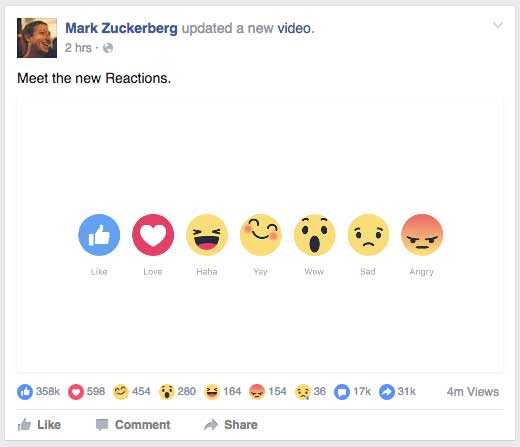Facebook users have been begging for a ‘dislike’ button since the dawn of their social media existence. Instead, we got something a little different, and it’s up to you to decide: are the ‘reactions’ better than what we asked for?

The reasoning behind this need: people want more subtle ways to express their feelings toward a post. No one wants to ‘like’ a post announcing that your beloved pup has passed. Enter the ‘sad’ button, and all your problems are solved!
Facebook is testing out your option to choose ‘love,’ ‘haha,’ ‘yay,’ ‘wow,’ ‘sad,’ or ‘angry’ in reaction to the posts on your newfeed. If you’re having deja vu, you’re probably thinking of Buzzfeed, who has been doing something similar for quite a while. After you read an article, you can assign a reaction, effectively sorting the articles by how they will make you feel. Whether you’re looking for a good laugh or some controversial news, Buzzfeed has something for everyone.

What do Facebook Reactions mean for consumers?
Before, if your friends liked a post, it would appear in your news feed as relevant to you. This convenient feature won’t change. For now, all reactions count as likes, so whether your friends are happy, sad, amused, or angry about something, you’ll hear about it.
What do Facebook Reactions mean for brands?
“Reactions gives businesses a really crisp way of understanding on a multidimensional level how people are feeling about the things that they’re posting,” says Richard Sim, Facebook’s director of monetization product marketing. At the very least, you can feel relieved that you didn’t get a dislike button, which could open the flood gates for a publicity nightmare. At best, this is a great way to gather a more in depth analysis on how your audience reacts to different types of posts.
How will you use Facebook Reactions as a consumer? Do you think that these new options for engaging with posts will change the way you post on your business account?
